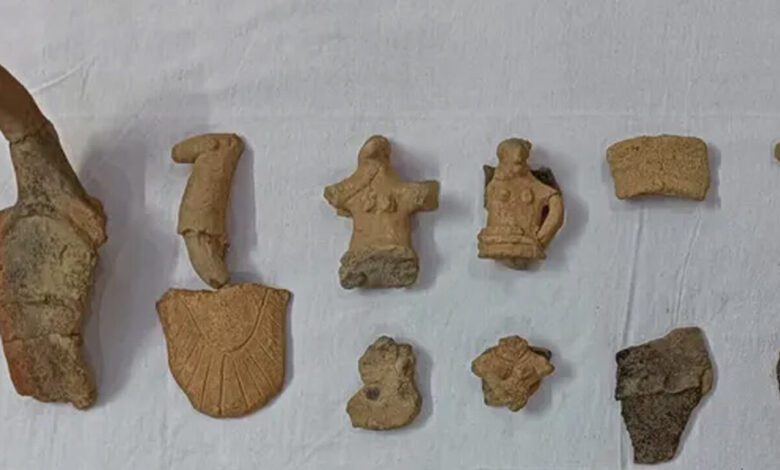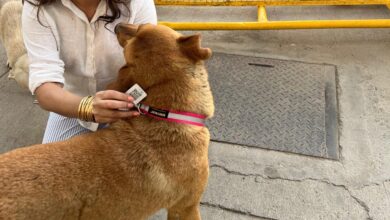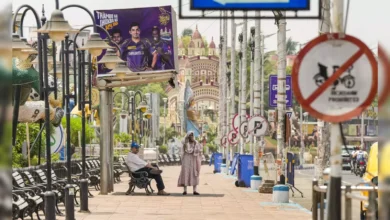Karnataka finds terracotta figurines dating back to 800-700 BCE
One mother goddess, two peacocks, two horses, a mother goddess' hand, and an unidentified object are all depicted on the eight figurines that were discovered. According to a press statement from Murugeshi, who was involved in the explorations, the megalithic site at Mudu Konaje was found and reported on by historian and scholar Pundikai Ganapayya Bhat in the 1980s.

Recent archaeological digs at Mudu Konaje near Moodbidri in Karnataka’s Dakshina Kannada district uncovered rare old terracotta figures in various stages of preservation along with fragments of bone and iron. According to T Murugeshi, retired associate professor in the department of ancient history and archaeology at Mulki Sunder Ram Shetty College, Shirva in the Udupi district, the figures date to 800-700 BCE.
One mother goddess, two peacocks, two horses, a mother goddess’ hand, and an unidentified object are all depicted on the eight figurines that were discovered. According to a press statement from Murugeshi, who was involved in the explorations, the megalithic site at Mudu Konaje was found and reported on by historian and scholar Pundikai Ganapayya Bhat in the 1980s.
About 8 kilometers from Moodbidri, the location is situated on the Moodbidri-Shirthady road. Nine dolmens were located on the side of a stone hill, making it the largest megalithic dolmen site. However, he claimed that only two dolmens are complete and that the remaining tombs are in ruins. India’s megalithic civilisation is recognized for the variety of burial practices and usage of iron.
One of them is the Dolmen. Large stone slabs known as orthostats were placed beneath a dolmen in a clockwise direction to form a square chamber. According to the announcement, a second enormous stone slab used as a cap stone to seal off this square room. A unique Indian discovery, the clay figures discovered in Mudu Konaje in a megalithic setting.
They were discovered within dolmens that had been disturbed by treasure seekers. The bovines discovered in the Dolmens aid in establishing the Dolmens’ chronology. The Bhoota cult or Daivaradhane of coastal Karnataka may be studied on a firm foundation because of the terracottas discovered in the megalithic grave. In the Malampuzha megalithic terracotta figures of Kerala and Egypt, cow bovine or cow deity had similarities.
While these figurines hold great significance, so does the art of terracotta figurine making. One such important town in Karnataka holding on to its last leaf is Pottery Town at Benson Road in Bengaluru. India will soon be in the thick of festivities with the upcoming Ganesh Chaturthi and Diwali as well. These festivities require clay figurines and terracotta lamps, one may assume that the business would be booming. A news source reported, “Once sought after by the royal family for fine works of art, the potters now are in demand only during festivals such as Diwali or Chaturthi or the wedding season. Artisans say business has fallen by 50-60% in the past 20 years; there are no takers for handcrafted pottery” as of 2017. Pottery Town is more than 100 years old and most families have been in the business of terracotta art since the since of the Mysore King, him being their top client.
It is tragic that terracotta and clay figurines which are discovered to date telling important stories from history now is relegated to a dying art.
Please, also have a look into :Karnataka HC says ‘unmarried daughter not entitled to maintenance under Domestic Violence Act



